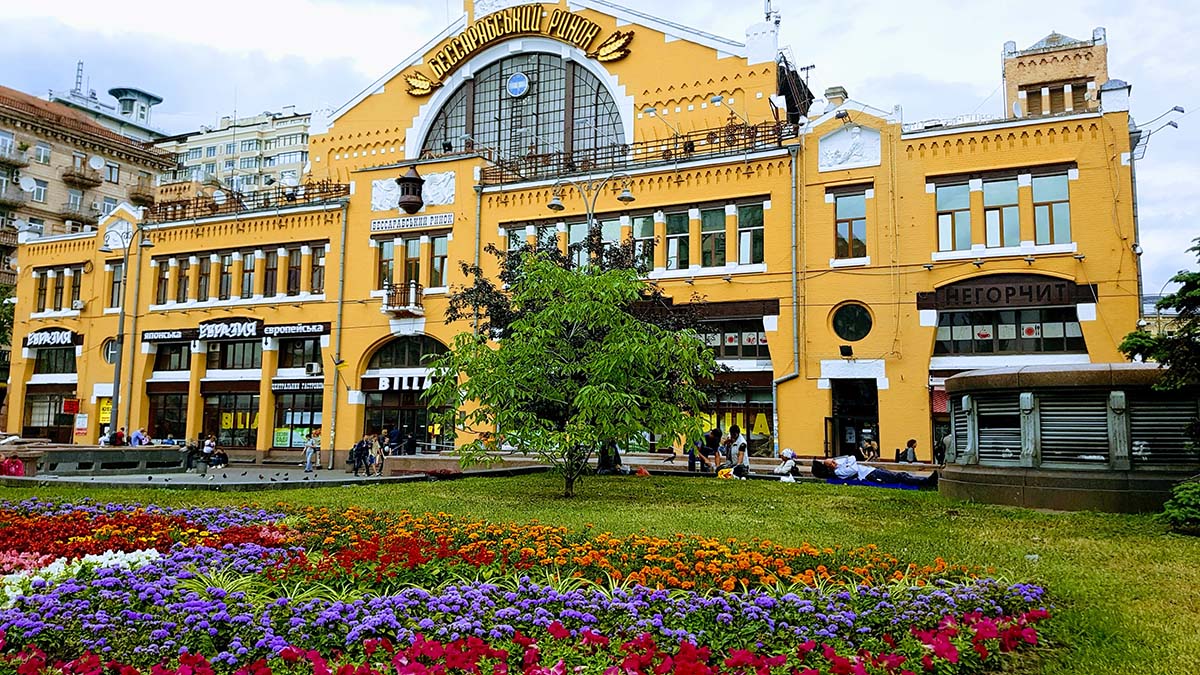The place where the market is now located was only improved in 1869. Before this, Bessarabka was a wasteland. It was constantly flooded with water running from all the surrounding hills and was strewn with household waste. The place was famous for the fact that tramps and people who traded in robbery and robbery gathered here. It was dangerous to appear in the Bessarabka area in the evening. On the site of a former wasteland with a bad reputation, they organized a square on which they planned to erect a monument to Bohdan Khmelnytsky (it was installed and stood until 1881). Trade on the square was carried out long before the construction of the market building. By the beginning of the 20th century, Bessarabka turned into a shopping area, completely covered with a variety of shopping pavilions. Horse-drawn transport flowed into Bessarabskaya Square from Khreshchatyk and Bibikovsky (now Taras Shevchenko) Boulevard. By 1902, it became obvious that trade in the square needed to be streamlined by building a covered market. The cost of construction was estimated at 500,000 rubles, despite the fact that the entire city budget was 2,000,000 rubles per year. But then in 1904, sugar manufacturer Lazar Brodsky dies, who bequeathed 500,000 rubles to Kiev for the construction of a market (he also financed the construction of a polytechnic institute in Kiev, choral synagogue, operetta theater).
The development of the Bessarabian market project began only in 1908 due to lengthy negotiations with Brodsky’s relatives on the conditions for receiving money. The city did not want to take the sugar factory’s money for a long time because of some additional conditions that he stipulated in his will. Initially, the city planned to have a food and flower market in the same building, as well as a city public library, but this idea was later rejected. In its final form, the market was intended for trading only. The building was to house 31 outdoor shops, a restaurant and an extensive retail space. There were 88 places in the hall for selling meat, lard, and sausage; 88 places – for the sale of herbs and vegetables, dairy products, bread; 27 places for the sale of fish. According to the calculations of the commission in charge of future construction, net profit from the market was expected at 10-12% per annum. In the summer of 1908, a closed competition for designs for a covered market in Bessarabka was held. The first prize was received by Heinrich Guy. When choosing the project, the commission took into account that the architect already had experience in constructing a similar market in Warsaw. It took a year to finalize the project and prepare the area for construction, and in 1910, the company Gugel and Kalmanovsky, which won the bid for the contract, began work under the supervision of civil engineer Mikhail Bobrusov.
The design of the market was incredibly complex. Thick brick walls were combined with a multi-ton metal vaulted frame on which the glass roof rested. The translucent roof, supported by a metal truss, made it possible to achieve previously unattainable illumination of the interior space. Local architects had no experience in constructing such structures, and in order to better prepare for the work, Bobrusov was even sent to Europe to inspect and familiarize himself with the structure of covered markets. Construction was successfully completed and the Bessarabian market was consecrated on July 3, 1912.
In the 1930s, the market housed the forensic laboratory of the People’s Health Committee (apparently it needed the market’s underground refrigerators, once ordered from Tallinn). In the 1960s, the market was reconstructed, but it has survived with care to this day, remaining almost unchanged. In the 1980s, the market was almost destroyed because it was assumed that a transport interchange would be built in its place. According to many Kiev residents and guests of the capital, the Bessarabian market is the most expensive in Kyiv. The idioms “expensive, like in Bessarabka”, or “we are not in Bessarabka” (meaning “bargaining is inappropriate”) have become firmly established in the everyday life of Kiev residents.
Where is the Bessarabian market?
Bessarabskaya Square, 2
